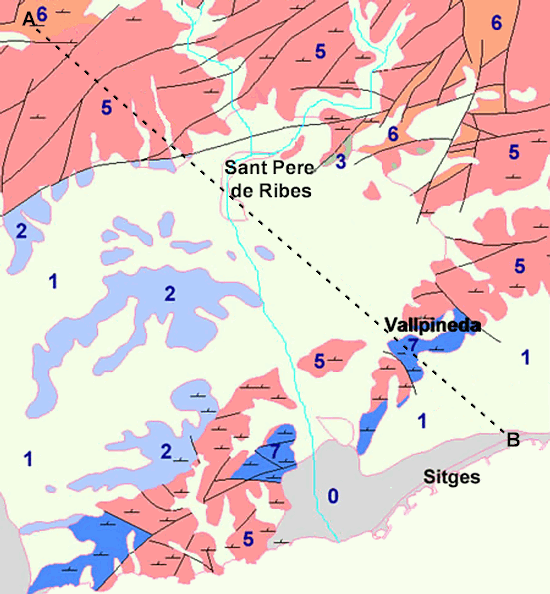The geological history of the Sant Pere de Ribes basin, Barcelona, Spain
 |
||||||||||||||||
| Sant Pere de Ribes - Sitges Geological map | ||||||||||||||||
|
||||||||||||||||
 |
| Sant Pere de Ribes - Sitges Geological Section A-B |
The geological history of the Sant Pere de Ribes basin
The deeper substratum has a base of slates and Paleozoic granites (400 MA) which
became coated with Mesozoic marine sediments (5/6/7) (between 248 and 65 MA).
Subsidence and cracking in these materials caused a block to collapse creating the Sant Pere de Ribes depression. This became flooded, and sedimentary materials (2) accumulated in a Miocene sea (about 23 million years - MA). This was finally covered by new Quaternary deposits (1) (under 2 MA).
River erosion has been continuously reshaping this structure, revealing the ancient Mesozoic rocks beneath.
The
saldoneres of Sant Pere de Ribes: a tool for the interpretation of the
geological history
Geology
fieldwork in Sitges, Barcelona
